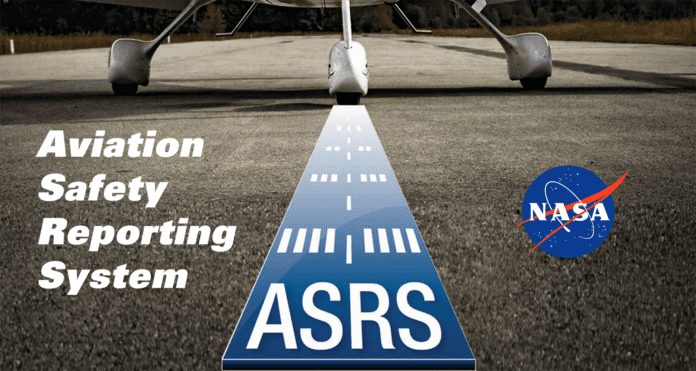NASA says a significant surge in anonymous safety reports for 2023 is actually “positive indication of a healthy safety culture” and marks a “banner year” for its Aviation Safety Reporting System (ASRS) program.
In its year-end roundup featured in its CALLBACK newsletter, NASA highlighted the program’s success. “ASRS’s business of collecting, analyzing, and disseminating all kinds of aviation safety data has approached pre-pandemic levels and continues to grow. Our intake this year will exceed 100,000 reports, a 52 percent increase over 2020 levels.”
The annual summary also underscored the number of alert notices ASRS generates—providing critical safety information to relevant parties. At the current rate, NASA says this figure is projected to reach 243 in 2023, surpassing the 2020 output by 52 percent.
NASA ASRS Director Becky Hooey told AVweb the uptick in reports means those in aviation are actively engaged in improving aviation safety. “Tens of thousands of these reports contain proactive callouts and lessons-learned shared by aviation professionals committed to ensuring the safety of aviation,” Hooey said.
The confidential ASRS program has been in operation since 1976. NASA says it has been an important tool for pilots and airline professionals in identifying potential hazards. In October more than 10,000 reports were submitted, including 5,825 from air carrier/air taxi pilots and 1,605 from general aviation pilots.




































I see it. Good info, I did not know of the publication, “CALLBACK newsletter”.
How could such a knowledgeable and outspoken commenter such as yourself not know about Callback?
Historically – interesting, entertaining, free reading.
Good ASRS crew report.
Part 121 – Pitch and Power Prevail
This B737 MAX First Officer encountered predictable icing
conditions that resulted in major unexpected consequences. Takeoff and climb to cruise were uneventful. At cruise, FL260, we received an ATC reroute to avoid weather.…
We were [now] cruising at 280 knots in IMC conditions at
+2 degrees TAT with engine anti-ice on. The Captain was
flying. We then noticed the airspeed start to go way down
then go way back up. It indicated maybe 40 knots to 300
knots.… “AIRSPEED LOW” kept announcing as well.
The Captain turned off the autopilot and autothrottle, set
4 degrees nose high, and told me to set power. I pulled the
power to 70% N1, and we compared PFDs. My airspeed
indications would indicate properly for a few seconds then
jump up or down. The Captain’s were constantly moving up
and down, so we transferred control to the First Officer. I
called for the QRC, and the Captain read and accomplished
the steps. We had missed flight directors to ‘OFF.’ We had
climbed a couple hundred feet during this.… I asked the
Captain to notify ATC, and I turned the airplane eastbound
in an attempt to exit IMC. It worked, and a couple minutes
later, we exited IMC and started a descent to warmer air.
While the Captain ran the QRH for unreliable airspeed and
informed ATC and Dispatch, I continued to fly.
As the air warmed and we exited IMC, airspeed indications returned
to normal. We reviewed pitch and power settings in the QRH
to make sure the airspeeds were accurate. The rest of the
descent and arrival…was uneventful. My guess is that we
accumulated enough ice on the probes to make the airspeed
indications…unreliable. I didn’t see abnormal icing on the
windshield wipers, nor was icing reported. Being in IMC at
+2 degrees was about perfect conditions for it. After landing,
the Captain and I talked about how we were thankful for
737 MAX simulator training that we had both recently
completed. The training prepared us…well.
I am a strong advocate of the ASRS program and make certain that my students are aware of its existence and how to access the online reporting system. I used the service several years ago for, well, I’ll call it a ‘situation’ for lack of a better term this early in the morning. I filed an ASRS for the event and the act of filing (act of contrition?) required me to think more deeply about what had occurred. The ‘situation’ involved a flight review and an endorsement for a lapsed pilot. It was an unusual circumstance for a newly minted instructor (me) and it was inadvertent due to my ignorant assumption of knowledge.
An aviation attorney I consulted after the fact (something kept bothering me…) gave me some excellent advice, told me it wasn’t a big deal, and recommended I file a NASA (or ASRS) report. I gained some valuable knowledge from filing the report where perhaps prior to ASRS, I would not have thought much further about what had transpired… or worse, had my hand slapped by the FAA. It was my fault due to my lack of understanding the FARs and a valuable lesson learned. It won’t happen again on my watch… and that’s the point.
I also make my students aware that this isn’t a ‘get out of jail free’ card if they intentionally violate a regulation and the final judgment would be in the hands of the FAA. Be careful out there…